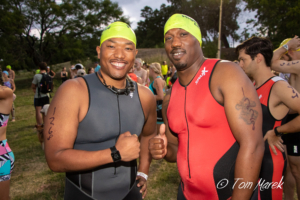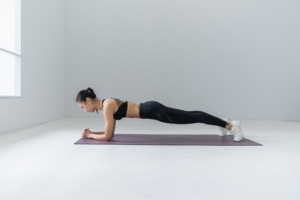These 4 places provide some of the best Kerrville lodging for triathletes
The Texas Hill Country has an endless amount of spectacular views. That’s why Kerrville Tri is known as The Most Scenic Triathlon in Texas! These 4 places provide amazing sights or they’re really close to places you’ll want to visit. They’re also the best Kerrville lodging for triathletes and their families during race weekend. Pro tip: don’t wait too long to book your race weekend stay because these spots fill up quickly. While you continue to focus on your training, we’ll break down the best Kerrville lodging for you. Check out this interactive Google Map to see where they’re located!
Inn of the Hills

Credit – Inn of the Hills
This historic hotel is Kerrville Tri’s host hotel once again. It’s home to the 2-day Packet Pick Up and Expo and located within walking distance of swim start (Nimitz Lake) and Transition One (T1). In addition to being the host hotel and the center of Kerrville Triathlon, Inn of the Hills is located near many Hill Country attractions.
It’s within driving distance of downtown Kerrville, Riverside Nature Center, Kerr Arts and Cultural Center, Museum of Western Art, and Stonehenge II. Pro tip: Inn of the Hills is completely available to Kerrville Tri participants and their families for $118/night using this specific link. On Friday, September 3rd, available rooms will open to everyone else.
***7/28 UPDATE – Inn of the Hill is sold out for Saturday night. They have 36 rooms left for Friday night ONLY.
YO Ranch Hotel

Credit – YO Ranch
Turn the luxury meter up when you book with the Kerrville Tri block at the YO Ranch Hotel. It’s located near I-10, just 3.5 miles from Inn of the Hills and Packet Pick Up. You can relax before or after your race at the massive pool. If you’re celebrating with friends after the race, the swim-up bar is the place to be!
Extend your stay and take advantage of their connections to local wineries, golf courses, and places to ride horses. Pro tip: reserve your room for $118/night using this specific link before the August 24th cutoff date. Hurry because rooms are limited and going quickly.
Kerrville-Schreiner Park

Credit – Kerrville CVB
Want some more space and a little more nature? Kerrville’s largest municipal park has 517 acres and is nestled right next to Kerrville Lake. It’s also 4.8 miles from Inn of the Hills. No matter your lodging preference, Kerrville-Schreiner Park has you covered.
They have tent camping, 30- and 50-amp RV sites, cabins, and a ranch house. There’s so much to do when you’re not swimming, biking, and running. Take your pick of hike and bike trails, sand volleyball courts, kayak or canoe rentals, fishing, and more.
By the River RV Park and Campground

Credit – By the River RV Park and Campground
This 65-acre spot is family-owned and operated, next to the Guadalupe River, and 4 miles to the west of Inn of the Hills. By the River RV Park and Campground is also ideal for triathletes who want to enjoy nature and outdoor activities.
They have 30- and 50-amp RV sites or you can pitch your tent on their 22-acre island. With 2000 feet of shoreline, there’s plenty of space for swimming, kayaking, fishing, or floating. Bring your camera and capture some amazing sunsets!
Don’t wait any longer! Make your reservation at the best Kerrville lodging for triathletes before spots fill up. These 4 spots have something for everyone, whether you want the comfort of a hotel or the spaciousness of the great outdoors. And the best part? Everything is located within less than 5 miles from all the Kerrville Tri action.










 “We can’t wait to be back to racing and spending time with the endurance sports community,” said Ryan Dolan, President of Zone3 USA. “High Five Events has produced high-quality, community-based events for a long time and we’re excited to partner with them for CapTex Tri and Kerrville Triathlon.”
“We can’t wait to be back to racing and spending time with the endurance sports community,” said Ryan Dolan, President of Zone3 USA. “High Five Events has produced high-quality, community-based events for a long time and we’re excited to partner with them for CapTex Tri and Kerrville Triathlon.”
 This is a top training choice for injured runners. When wearing a flotation device, aqua jogging takes all the pressure off your lower body. It enables you to work out without experiencing any discomfort or pain from your injury. If you’re running in a shallow pool, the impact on your lower body will be significantly reduced.
This is a top training choice for injured runners. When wearing a flotation device, aqua jogging takes all the pressure off your lower body. It enables you to work out without experiencing any discomfort or pain from your injury. If you’re running in a shallow pool, the impact on your lower body will be significantly reduced. When you’re running in water the exertion is much less than on land. You don’t have to be injured or training for a triathlon to enjoy the benefits of aqua jogging. Incorporate it into your week and switch it out for a run. If you have a 60-minute run planned, try aqua jogging for 60 minutes. Your weekly mileage will be lower, but you’re still getting a significant workout without all the stress and pounding from running on the pavement.
When you’re running in water the exertion is much less than on land. You don’t have to be injured or training for a triathlon to enjoy the benefits of aqua jogging. Incorporate it into your week and switch it out for a run. If you have a 60-minute run planned, try aqua jogging for 60 minutes. Your weekly mileage will be lower, but you’re still getting a significant workout without all the stress and pounding from running on the pavement.








